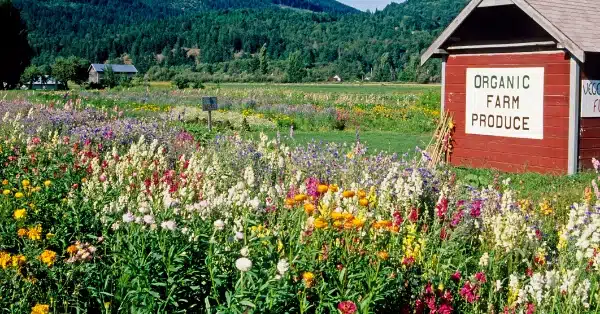Plants out of place, or a sign of healthy soil? In a column in Acres U.S.A October 2019 issue, Spencer Smith, Savory Field Professional (for the Savory Global Network) and Californian rancher, says that plants which show up in your fields could be adding value by unlocking nutrients and improving soil structure. The relationship between farmers and weeds is a complicated one!
The carrot diet
Imagine going on a crazy crash diet and eating only carrots for a month? It’s an extreme example, but you can imagine how your gut would adapt during the course of the diet. The biology of your digestive system would focus on the elements needed to extract energy and nutrients from carrots specifically. When you do eventually eat another type of food, it will likely upset your stomach as you will lack the gut biodiversity to break down multiple food types.
A similar thing happens with monoculture planting – the soil biology adapts to only support a relatively small spectrum in symbiosis with that particular crop. In turn, this leads to lower resilience to new elements introduced into the system, such as disease.
The varied diet
If your body is accustomed to eating a variety of proteins, fats and carbohydrates, your gut microbiome will be more diverse and able to metabolise a greater variety of nutrients. This allows you to withstand changes in your diet without getting an upset stomach.
Back to the fields – in a diverse pasture, all of the different plants are feeding different biological communities in the soil, resulting in a balanced diet for the soil biome and healthier plants.
Diversity in food sources = diversity in soil biology
The life in the soil provides large amounts of nutrients to plants, helping them grow into higher-quality vegetation. Plants that grow in biodiverse soil:
- Have healthy immune systems
- Are more resistant to disease and pest pressure.
Plant biodiversity and associated processes and systems have evolved over millennia as a way for ecosystems to function in the face of adversity.
- Different plants produce different foods for the soil biology
- They also correspond with the availability of other plant nutrients
- Symbiotic relationships are responsible for mineralising other nutrients.
Biodiversity in plant communities also impacts the physical properties of the soil by creating relationships with arbuscular mycorrhizae, which produce glomalin and create improved aggregate structure. An improved aggregate structure means increased water filtration rates and an increased amount of water in the rhizosphere for plant use.
[READ] Find out more about the mycorrhizal network
So, how does this apply to modern farmers?
Maintaining a level of plant diversity is key to soil health, and thus to crop health and yield. Methods such as cover cropping and intercropping increase the diversity of the ecosystem to unlock minerals to the rhizosphere, create plants’ immune systems, deter pests and detoxify soil pollutants.
- Cover cropping – planting crops that will create better nutrient availability for the entire crop.
- Intercropping – the cultivation of two or more crops simultaneously on the same field.
“Figuring out how to increase diversity in our pastures and crop fields will add value and resilience to our operations,” Smith says. “No longer is a plant out of place considered a weed on some of the most productive and progressive farms.”
Read the full article in the October 2019 issue of Acres U.S.A.
It all starts in the soil
At Zylem, it’s our goal to improve plant nutrition from the soil up using sustainable agriculture methods and inputs which aim to increase biodiversity, reduce chemical reliance, regenerate the soil, boost plant vitality and enhance human health.
Find out more about our services and solutions.
Contact us on 033 347 2893 or send your enquiry to [email protected].

About the Author: Alex Platt
Alex is Business Development Manager at Zylem. He’s inspired by the potential of regenerative farming and takes a special interest in the technology and products that are moving agriculture in a more sustainable direction.

